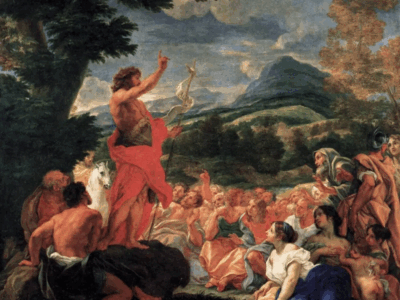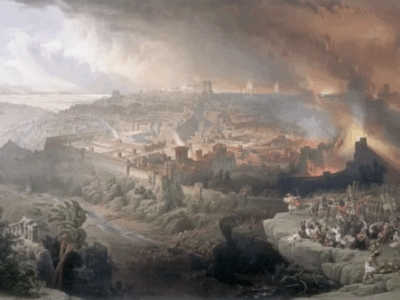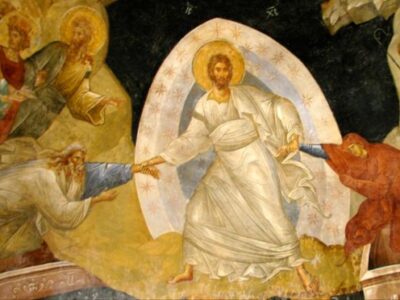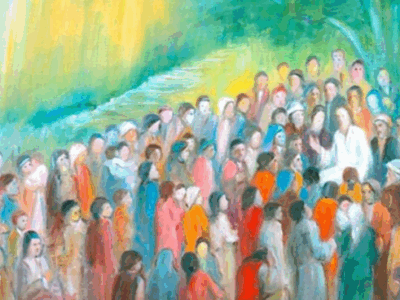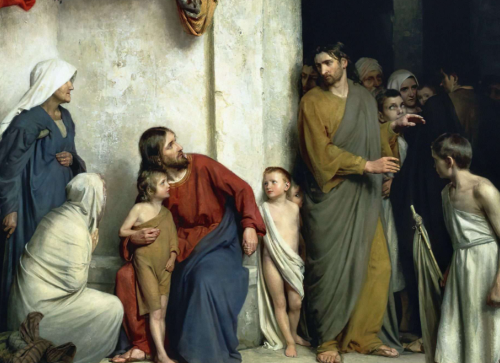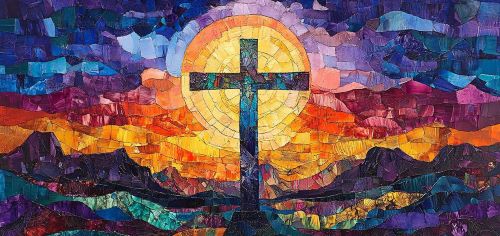Sir, We Wish to See Jesus
Year B
Jeremiah 31:31-34
Psalm 119:9-16
Hebrews 5:5-10
John 12:20-33
May the words of my mouth… O God… speak your Truth…
Dutch photographer and designer Bas Uterwijk… has found a new way to use artificial intelligence… and specialized software which uses what’s called machine learning… to create a new art form… and the process is easy to understand… it compiles everything that’s known about a person… where and when they lived… details of their lives that may include physical descriptions… the geography and climate in which they lived… available diet… whatever’s available… and it creates an image that’s in many ways more accurate… than the technical information about them alone can possibly draw…
And when it comes to the image of Jesus on our bulletin cover… the result is striking… although the Bible offers no clues as to Jesus’ physical appearance… it does mention that he didn’t stand out from the crowd… in fact… when he was betrayed… he had to be picked out of a group of ten other men… Mary Magdalene mistook him for the gardener… and the two disciples on the Emmaus Road didn’t even recognize him… so beginning with his birthplace in Bethlehem… in the Middle East… the software concluded that Jesus would exhibit the same darker skin tones… and the more conspicuous facial features as the inhabitants of that region… now the artist who created this image doesn’t claim that it is Jesus… but considering that the tens of thousands of images with which we’re familiar come out of a western perspective… of a white man with straight hair… it’s understandable why this image might be disconcerting…
Jewish Greeks… who came to Jerusalem to worship at the Passover… went to Philip and said… Sir… we wish to see Jesus… so again… the man on the cover is not the man they would have seen… if indeed Philip and Andrew actually brought them to see Jesus… but what might it mean to see… Jesus…
There’s a 1995 song by Joan Osborne called… One Of Us… in which she asks some of these questions… if God had a face… what would it look like… and would you want to see… if seeing meant that you would have to believe… ] and if God had a name… what would it be… and would you call it to his face… if you were faced with Him in all His glory… ] and what would you ask… if you had just one question…
What would these Greeks have asked Jesus… the text doesn’t say… but we can imagine that they were part of the crowds… and saw Jesus’ triumphal entry into Jerusalem… we can imagine that they sought him out because word about him had spread… stories about his teachings… the call to put God over Empire… his love of the outcast and sinner… and the miracles… the miracles drew people from all over… people seeking healing from dis-ease and infirmity… and people hoping he could undo the death of their brother… or children…
And if the image on the cover calls into question some of our assumptions about how Jesus looked… I wonder how this understanding calls into question some of our assumptions about the kind of life into which we are called… and what we wish to see… or not…
And when Philip and Andrew went to tell Jesus about these Greeks… Jesus didn’t ask what they wanted… he didn’t say… Please bring them to me… ] while there seems to be a disconnect between Philip and Andrew conveying the request in one breath… and what Jesus says in the next… while there seems to be a disconnect… there’s no break in the text… this particular request from non-Israelites seems to have… in some way… brought home to Jesus… the reality of his impending death…
But there may be a clue as to why… a clue in the occasional disconnect between how the text is translated… and what the original words meant to those who wrote the Gospels… now many of you will remember the story from John 3:1… about how Nicodemus… a leader of the Jews came to Jesus by night… and said to him… Rabbi… we know that you are a teacher who has come from God… for no one can do these signs that you do apart from the presence of God… and when Jesus answers him he says… Very truly I tell you… no one can see the kingdom of God without being born from above… no one can see… and the Greeks too said… we wish to see Jesus…
In the Greek… the seeing of the kingdom of God… that Jesus describes to Nicodemus… and the seeing that the Greeks asked for… are the same word… but it doesn’t mean to simply look upon… it means to become acquainted with by experience… to become a partaker of… to know absolutely… in other words… the Greeks wanted to enter into Jesus’ revelation… they sought the full revelation of the cross… divine and human love entering into and transforming death… and that these non-Israelites came asking to enter Jesus’ revelation… seems to precipitate Jesus’ realization that the hour had come for him to be glorified… and that he will draw all people to himself… and no one will be left out…
As John Shea writes… an agricultural image provides the key… a single grain of wheat enters the ground… and dies… in order to grow into much fruit… the revelation will entail the death of Jesus… the Jewish individual… but his death is not construed as loss… but instead… it’s seen as the beginning of a transformative process that will yield greater results than individual life… Jesus will become more through death… not less… and an aspect of this more… is greater availability… God’s descent from boundlessness into human form… is bookended by Jesus’ ascent back into omnipresence…
And it’s clear in our readings from both Hebrews and the Gospel… that Jesus doesn’t glorify himself… the verb is a passive verb… we hear phrases like… Christ did not glorify himself in becoming a high priest… and… having been made perfect… he is acted upon by an outside force… he is gloriFIED… and it is for this reason… that he has come to this hour… that he asks God to glorify God’s name… and the voice from heaven said… I have glorified it… and I will glorify it again… and the dying seed… is an indication of this…
The promise in Jeremiah’s prophecy is the crowning covenant of all… because in it God… says that God’s law will move from outside of us… to inside of us… that God will write God’s law on our hearts… and when God’s law is as close to us as our breath… our actions are always Godly… and the seed which dies… the grain of wheat which falls into the earth and dies… is Christ… Christ is the seed written on our heart… our heart is the soil… but this seed isn’t going to grow in a soil that’s called fear… and we can let go of that fear since God says… I will forgive their iniquity… and remember their sin no more…
Something larger is happening in these texts… they intersect with us in immediate and personal ways… our vocations may be different… but our salvation is bound to Jesus in how it glorifies the One who was able to save him from death… obedience and salvation are aligned… and are unfolding in our lives… and while discipleship is not a solitary journey… there are also seeds within each one of us… which constrain us… make us shortsighted… selfish… prejudiced… and which must eventually die… and when the right conditions exist… they too let go of the fear of losing individual selfhood… and give up their individuality so they can bear much fruit… exhaling into boundlessness… and glorifying God…

